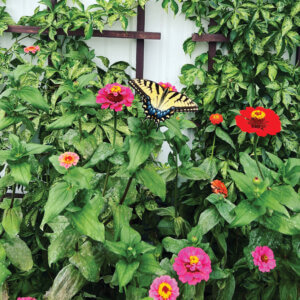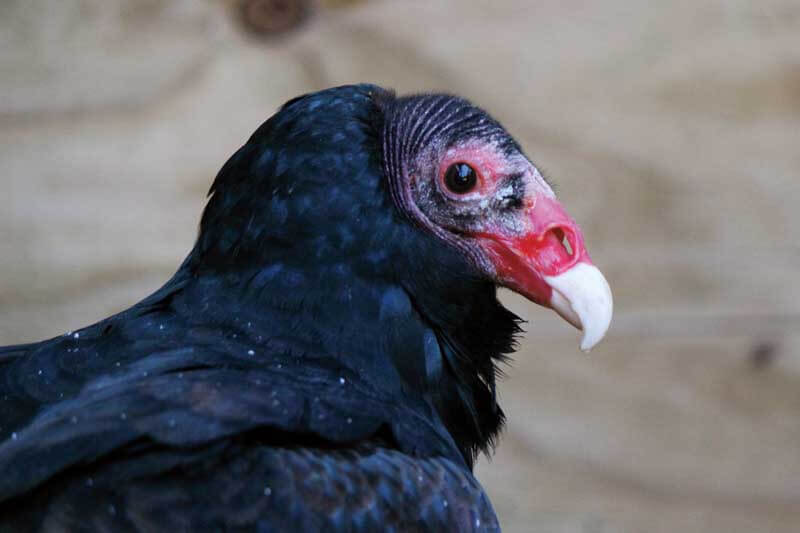

The turkey vulture plays a critical role in our ecosystem. It also has a surprisingly vivid personality.
West Virginia makes a great home for turkey vultures. “They nest in cliffs and caves, and we have a lot of rocky outcrops for that,” says Katie Fallon. “We have wind, updrafts coming off of mountains, where turkey vultures like to soar. And we’ve got roadkill and a lot of deer hunters leaving remains, and the birds make use of these human subsidies.”
If the idea of turkey vultures feeling at home alongside us seems distasteful to you, Fallon would like you to think again. She’s gotten into close, long-term relationships with the big scavengers as a co-founder of the Avian Conservation Center of Appalachia outside Morgantown. And as a writer, she’s interpreted and admired the animals in her forthcoming book, Vulture: The Private Life of an Unloved Bird.
The book is a natural history incubated in personal history. Fallon worked in a pet shop while she was an undergraduate at Penn State, where she hand-raised baby parrots bred in captivity. “The owner had a bunch of parrots that were her personal pets, and she would do outreach at local schools and I started to do those programs also.” One of her childhood pets was a parakeet. And it goes back even further: “My first word was bird, according to my mother.”
As a graduate student in creative writing at West Virginia University in the early 2000s, Fallon started writing on vultures, without any real aim. She and her husband, Jesse—they’d met as co-workers at the
pet shop—moved to Virginia Tech for a while, he for veterinary school, she to teach creative writing. They returned to Morgantown in 2009, and she wrote a book about the decline of the cerulean warbler, Cerulean Blues, a finalist for the Southern Environmental Law Center’s prestigious Reed Environmental Writing Award.
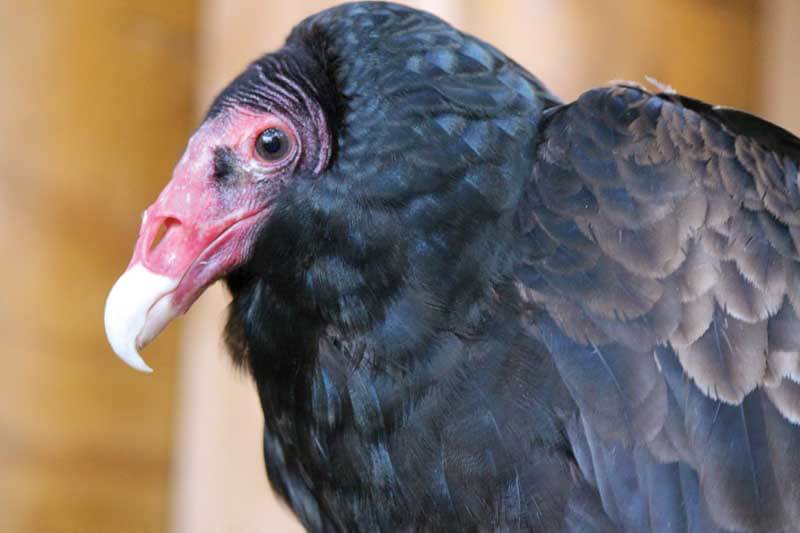
“But I’ve always been fascinated with vultures in particular,” Fallon says. That fascination has turned to a labor of love with the Avian Conservation Center of Appalachia (ACCA).
Tending the Flock
After the Fallons came back to West Virginia, they and a couple of friends started the ACCA in 2012. The organization cares for injured birds, conducts educational programs, and does research.
“Probably most of our efforts on a day-to-day basis are rehabilitating birds,” Fallon says. “We see all species of injured native migratory birds except for upland game birds like turkeys.” They treated
more than 300 injured birds in 2016. “About half are songbirds—robins, hummingbirds, chimney swifts, finches, swallows, blue jays, cardinals, sparrows—and about half are raptors, with a handful of water birds like grebes and loons and herons.”
ACCA’s 40-some volunteers care permanently for a small number of birds that wouldn’t survive in the wild because of permanent physical or behavioral disabilities, and they train those birds for educational programs as “ambassadors for their species.” “Standing on your hand and going in front of a class is a really foreign thing for a bird to do,” Fallon says. “You can force the bird to do it, but the result would be a stressed, kind of helpless animal. Or you can build a relationship with the bird through positive reinforcement where the bird is confident, comfortable enough that it will stand on your hand in front of a class and not be too stressed about it.” Volunteers use bits of food for positive reinforcement. “If the bird steps onto the glove, we give it a little piece of food, and we give it little pieces of food to keep the experiences going. The behavior is conditioned at some point and you stop giving the food.”
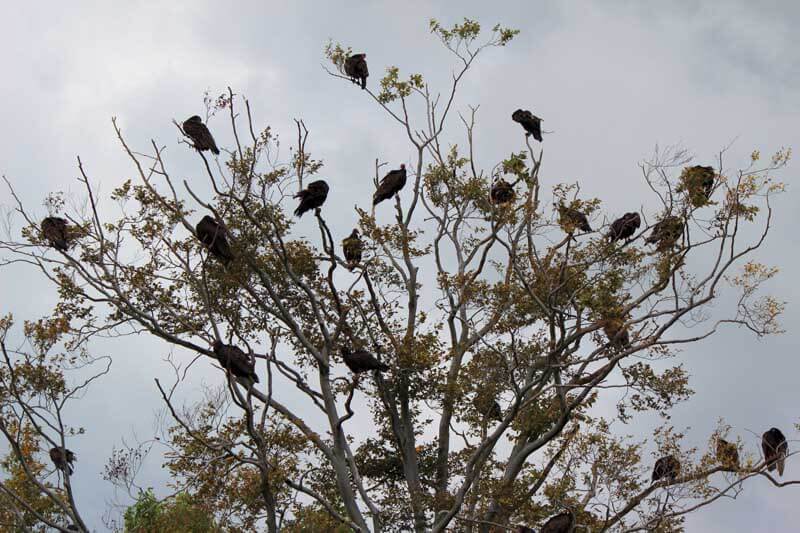
Every bird has a distinct personality—”or, bird-ality,” as Fallon puts it. “We have two turkey vultures at the ACCA. Lew, from Lewis County, is very, very shy. He was hit by a car and, when we first got him, he would kind of hide in the back, wouldn’t even eat until I was out of sight. He’s confident enough now that if he hears my voice he’ll run up to me and take food out of my hand, but his whole demeanor is timid.” Boris, a female turkey vulture from near Buckhannon, was shot, and her wing healed wrong. “This bird is not shy at all. The first or second day of training, she was standing on the glove eating food out of my hand. Sometimes she’s even a little pushy—if she wants food and I’m not fast enough, she’ll hiss at me. Even their posture is different. Lew tends to kind of peek around his shoulder, and Boris just sits and looks directly at you.”
“They’re awkward on the ground but on the wing, there is nothing more beautiful. They rarely flap—they swoop and they rock but they don’t look like they’re expending any effort …”
Katie Fallon, co-founder of the Avian Conservation Center of Appalachia
ACCA volunteers take these birds out for educational programs at nature camps and festivals. “We also go to a lot of schools with our non-releasable birds—some owls, falcons, a hawk, and the vultures,” Fallon says. “That’s where you’re really changing the future, getting birds in front of kids. It’s a special experience for them to see birds like that, especially comfortable, well-cared for, confident birds.”
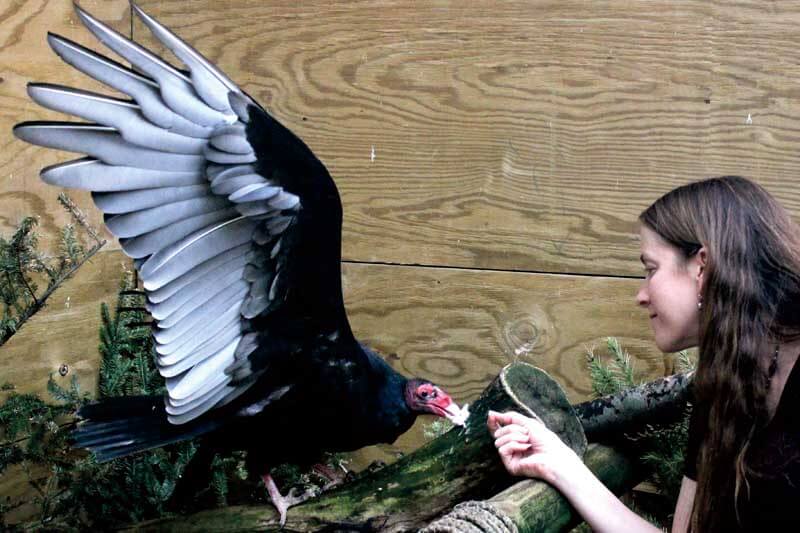
A third focus at the ACCA is research, which currently consists of distributing and monitoring American kestrel nest boxes in cooperation with the West Viginia Division of Natural Resources. “Kestrels are the smallest and most common falcon in North America. In this general region, they’re in decline as open lands revert to forest,” Fallon says. “We’re mostly trying to encourage kestrels to breed—they can be really good to have around a farm because they do take care of a lot of small pests that can be annoying for farmers.”
Buzzard Buzz
Vultures are often the victim of human attacks. Fallon speculates about the reason. “They look creepy and they eat dead things and they remind you of your own mortality.”
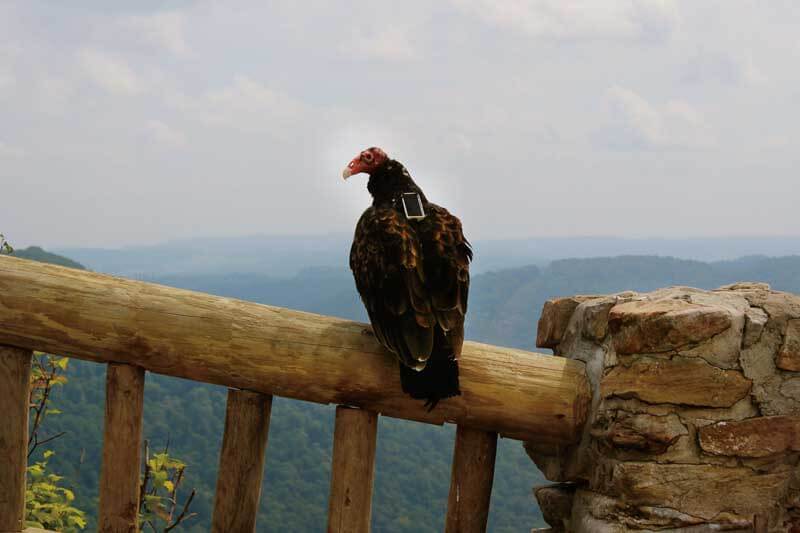
But they provide a critical service to their ecosystem, she points out: As scavengers, they remove dead animals that might otherwise contribute to the spread of diseases like anthrax, botulism, and cholera. Note that the turkey vulture’s Latin family name, Cathartidae, stems from a Greek word that means “to cleanse”—just like our word
“catharsis.”
Taxonomically, vultures are confusing. They share characteristics with birds of prey like hawks and eagles, but they lack true talons. In 1998, the American Ornithologists’ Union reclassified New World vultures
from the order that includes falcons to the one that includes storks—only to move them back in 2008 and then, in 2010, to move them with hawks and eagles into a whole new order called “Accipitriformes.”
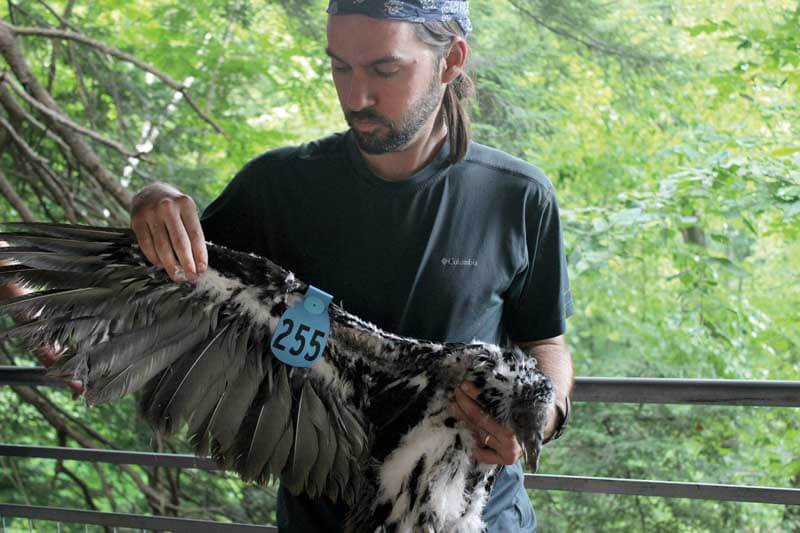
Worldwide, two-thirds of vulture species are threatened or endangered. “For one thing, it’s been linked to the ivory trade,” Fallon says. “Sometimes when poachers go in and kill a big elephant, they’ll poison the carcass so the scavengers come in and die, because if you have a lot of vultures circling over an elephant it can alert the authorities. Dozens or hundreds of vultures can be killed on one elephant carcass.” But in the Americas, other than the critically endangered California condor, which is responding gradually to recovery efforts, vultures are, on the whole, doing well, she says. Almost any day of the year, turkey vultures can be seen in much of West Virginia and across most of the Western hemisphere. Fallon admires their efficiency. “They’re awkward on the ground but on the wing, there’s nothing more beautiful. They rarely flap—they swoop and they rock but they don’t look like they’re expending any effort, and they’re really not expending much. They can’t create their own meals, so they conserve their energy.”
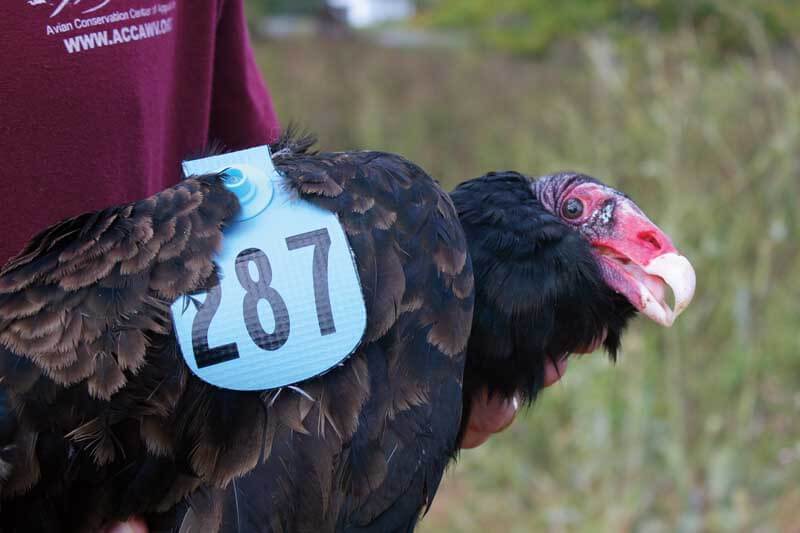
Turkey vultures don’t hurt people or pets. Yet, Fallon says, “every year we have turkey vultures that have been shot, like poor Boris. We admitted a bird a couple years ago that had three shotgun pellets in its body. We weren’t able to get them out, but the bird recovered to the point where she was releasable, so we put a transmitter on her and released her up at Coopers Rock in September 2014. She’s migrated twice—she goes to Georgia for the winter and comes back to the Davis–Thomas area in the spring. We think this year she was nesting.”
One way to be kind to vultures? They’re susceptible to lead poisoning from ammunition left in the gut piles of field-dressed deer, Fallon says, so consider changing up your ammunition. “You will make the golden eagles, bald eagles, and turkey vultures very happy.”
This story was originally published in the March 2017 issue of Wonderful West Virginia.
written by Pam Kasey
photographed by Katie Fallon





